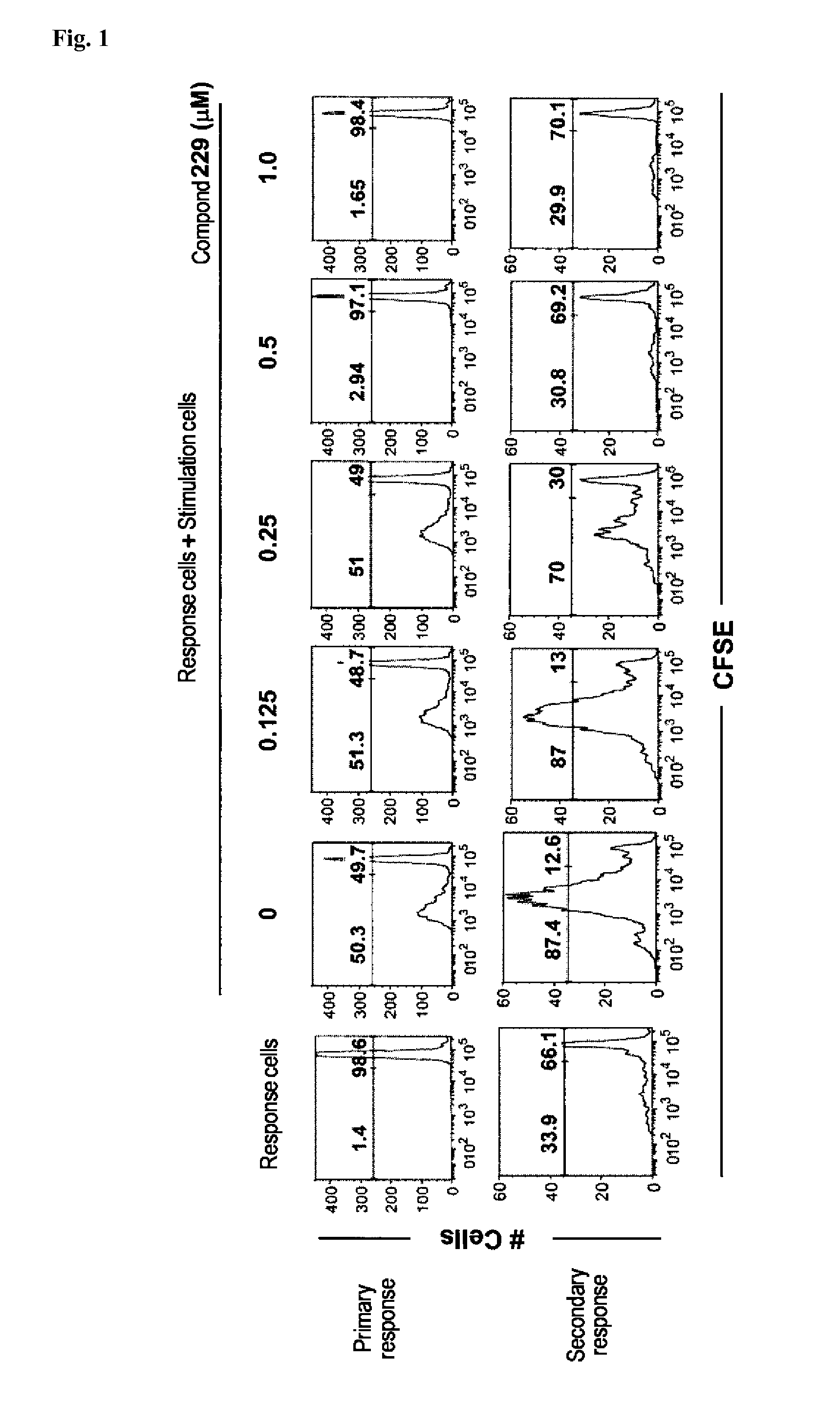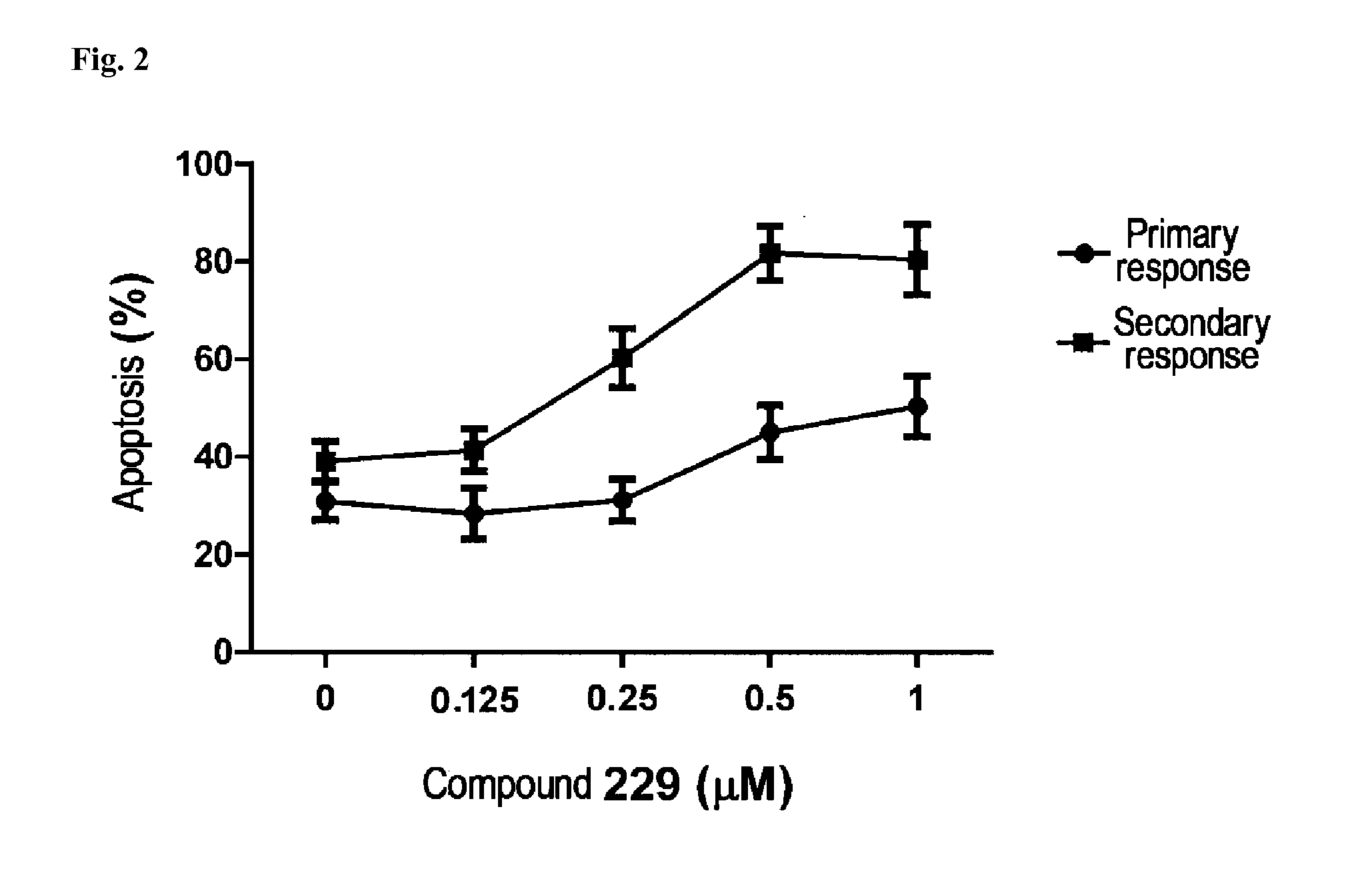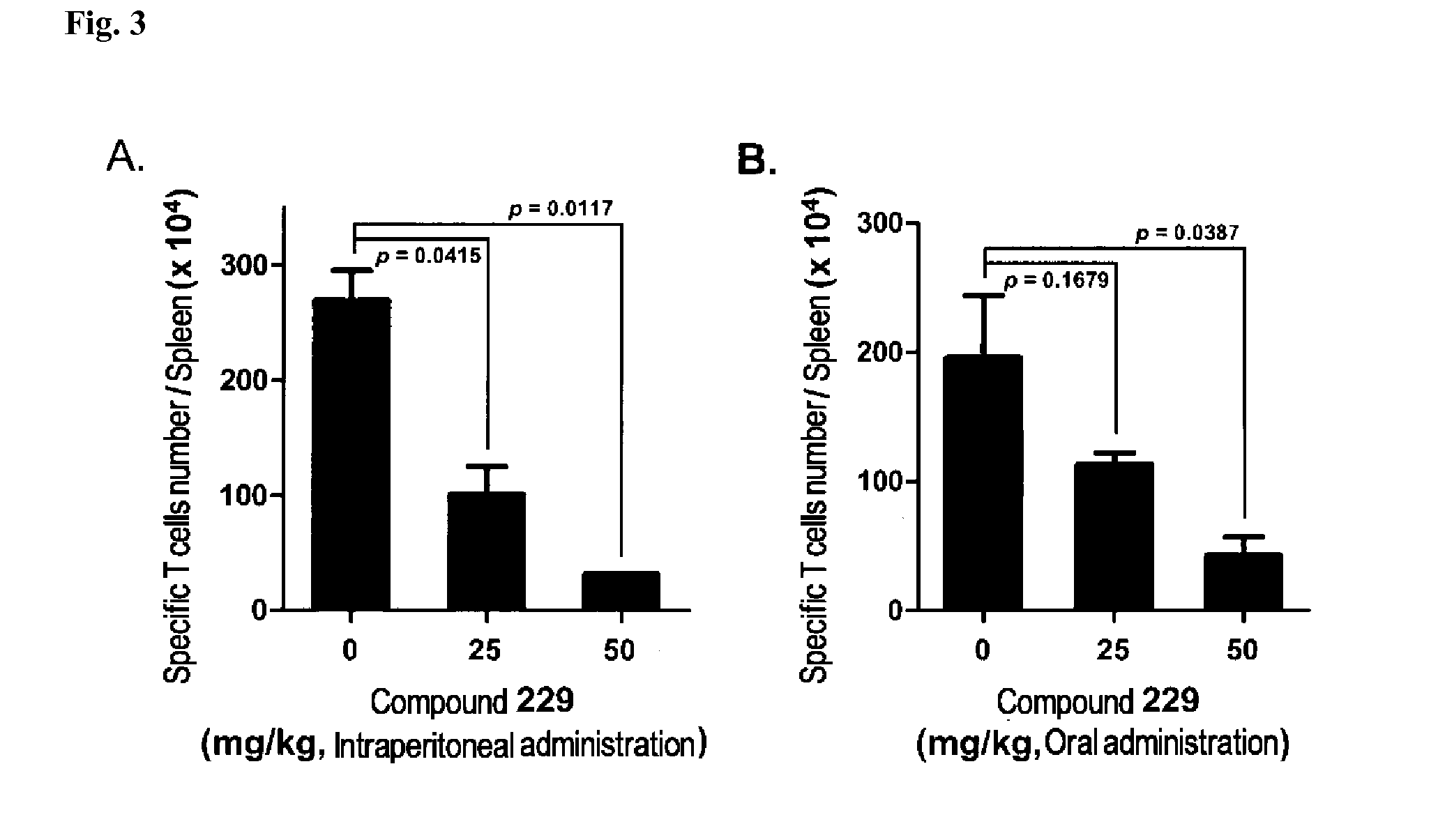N-acylhydrazone derivatives for selective t cell inhibitor and Anti-lymphoid malignancy drug
- Summary
- Abstract
- Description
- Claims
- Application Information
AI Technical Summary
Benefits of technology
Problems solved by technology
Method used
Image
Examples
example 1
Synthesis of Compound 013
Step 1. Synthesis of methyl 2-(o-tosyloxy)acetate
[0205]o-Cresol (5 g, 46.24 mmol) was dissolved in dimethylformamide. Methyl bromoacetate (7.1 g, 46.24 mmol) and potassium carbonate (19 g, 138.42 mmol) were added thereto, followed by stirring at room temperature for 1 hour. After the completion of the reaction, the reaction mixture was added with water, and extracted with ethyl acetate. The obtained organic layer was washed with a saturated ammonium chloride aqueous solution, dried over magnesium sulfate, and concentrated under reduced pressure to obtain methyl 2-(0-tosyloxy)acetate, which was used in the next step without any further purification.
Step 2. Synthesis of 2-(o-tosyloxy)acetohydrazide
[0206]To methyl 2-(o-tosyloxy)acetate (8.3 g, 46.24 mmol), an excess amount of hydrazine monohydrate was added, followed by stirring at 90° C. for 10 minutes. After the completion of the reaction, water was added thereto, thereby forming a solid, which was filtered a...
example 2
Synthesis of Compound 014
[0209]2-(o-tosyloxy)acetohydrazide (0.1 g, 0.55 mmol) and 1H-indol-5-carbaldehyde (0.08 g, 0.55 mmol) were dissolved in ethanol, followed by stirring at 90° C. for 3 hours. After the completion of the reaction, the reaction mixture was cooled to room temperature, followed by removing the solvent. Hexane and ethyl acetate were added thereto. The formed solid was filtered, and washed with diethyl ether to obtain Compound 014 as a white solid.
[0210]1H NMR (400 MHz, DMSO-d6): δ 11.38-11.28 (m, 2H), 8.33-8.07 (m, 1H), 7.80-7.79 (m, 1H), 7.54-7.52 (m, 1H), 7.44-7.38 (m, 2H), 7.17-7.11 (m, 2H), 6.88-6.83 (m, 2H), 6.49 (m, 1H), 5.15-4.63 (m, 2H), 2.24-2.21 (m, 3H).
example 3
Synthesis of Compound 034
[0211]2-(o-tosyloxy)acetohydrazide (0.1 g, 0.55 mmol) and 1H-indol-6-carbaldehyde (0.101 g, 0.67 mmol) were dissolved in EtOH, followed by stirring at 90° C. for 18 hours. After the completion of the reaction, the reaction mixture was cooled to room temperature, and concentrated under reduced pressure. The resulting solid was filtered, and washed with diethyl ether to obtain Compound 034.
[0212]1H NMR (400 MHz, DMSO-d6): δ 11.41-11.20 (m, 1.6H), 8.33 (s, 0.3H), 8.06 (m, 0.4H), 7.69-7.41 (m, 4H), 7.18-7.06 (m, 2H), 6.90-6.80 (m, 2H), 6.45 (m, 1H), 5.14-4.63 (m, 2H), 2.23-2.16 (m, 3H).
PUM
 Login to view more
Login to view more Abstract
Description
Claims
Application Information
 Login to view more
Login to view more - R&D Engineer
- R&D Manager
- IP Professional
- Industry Leading Data Capabilities
- Powerful AI technology
- Patent DNA Extraction
Browse by: Latest US Patents, China's latest patents, Technical Efficacy Thesaurus, Application Domain, Technology Topic.
© 2024 PatSnap. All rights reserved.Legal|Privacy policy|Modern Slavery Act Transparency Statement|Sitemap



